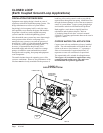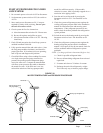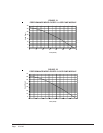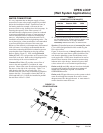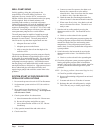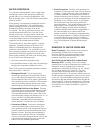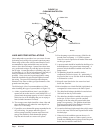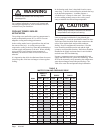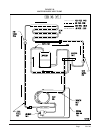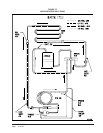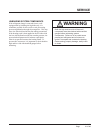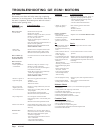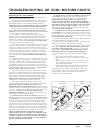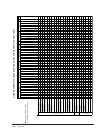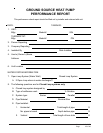
Manual 2100-532B
Page 38 of 46
For complete information on water well systems and
lake and pond applications, refer to Manual 2100-078
available from your distributor.
COOLING TOWER / BOILER
APPLICATION
The cooling tower and boiler water loop temperature is
usually maintained between 50°F to 100°F to assure
adequate cooling and heating performance.
In the cooling mode, heat is rejected from the unit into
the source water loop. A cooling tower provides
evaporative cooling to the loop water thus maintaining a
constant supply temperature to the unit. When utilizing
open cooling towers chemical water treatment is
mandatory to ensure the water is free from corrosive
minerals.
It is imperative that all air be eliminated from the source
closed loop side of the heat exchanger to insure against
fouling.
TABLE 8
WATER FLOW AND PRESSURE DROP
MPG
&1S2WQ
1S3WQ1S4WQ1S6WQ
GISP.dH.tFGISP.dH.tFGISP
.
dH.tF
31.032.0
45.051.19.080.2
52.177.24.132.3
67.129.33.213.5
73.213.52.383.7216.4
81.351.71.464.95.277.5
91.464.91.577.112.383.7
01
1.670.419.300.9
11
1.783.617.448.01
21
2.829.815.596.21
31
4.996.124.667.41
41
6.0154.423.748.61
51
1.896.81
61
967.02
71
9.948.22
81
WARNING
Thin ice may result in the vicinity of the
discharge line.
CAUTION
Water piping exposed to extreme low ambient
temperatures are subject to freezing.
In the heating mode, heat is absorbed from the source
water loop. A boiler can be utilized to maintain the loop
at the desired temperature. In milder climates a
“flooded tower” concept is often used. This concept
involves adding makeup water to the cooling tower
sump to maintain the desired loop temperature.
Units are equipped with double O-ring (female pipe
thread) fittings. Consult the specification sheets for sizes.
Teflon tape sealer should be used when connection to the
unit to insure against leaks and possible condenser
fouling. Do not overtighten the connections. Flexible
hoses should be used between the unit and the rigid
system to avoid possible vibration. Ball valves should be
installed in the supply and return lines for unit isolation
and unit water flow rate balancing.
Pressure / temperature ports are recommended in both
supply and return lines for system flow balancing. Water
flow can be accurately set by measuring the refrigerant to
water heat exchangers water side pressure drop. See
Table 8 for water flow and pressure drop information.



